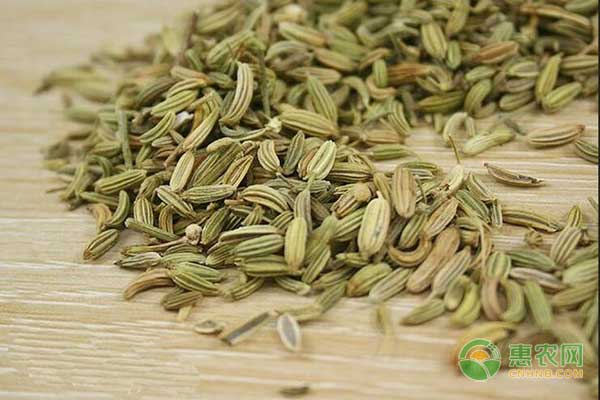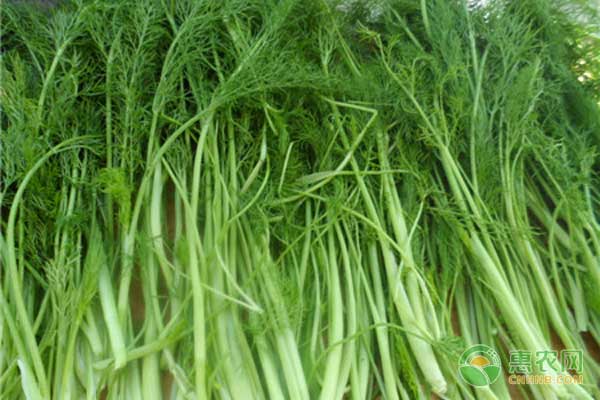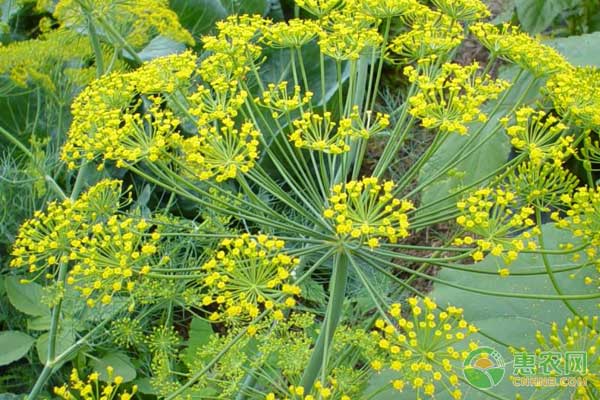Fennel is also called sauerkraut, cumin, fennel seeds, etc. Its tender stems and leaves can be eaten as vegetables, and its dried ripe fruits can also be used as seasonings. Fennel whole grass can be used as medicine, and it is a combination of food and medicine. The fennel originated in the Mediterranean region and has strong adaptability and can be cultivated all over the country.

I. Import and export arrangements
The fennel is mostly cultivated in the spring and autumn seasons, that is, harvested from March to April and from July to September, 40 to 55 days. It can also be cultivated in the greenhouse after the autumn extension or spring, so that the supply of fennel is delayed and 1 to 1.5 months earlier.
Second, the variety selection
Fennel generally chooses varieties that grow fast, are cold-resistant, disease-resistant, and have high yields, such as Inner Mongolia cumin and Qingxian “Dayu†cumin.
Third, fertilization and land preparation
Combine with the land preparation, apply 3000 kg of high-quality decomposed farmyard manure, 100 kg of super-calcium phosphate or 15-20 kg of diammonium per acre, and spread the ground and deep-turn it into a 1.2-meter wide raft.

Fourth, sowing
1, the amount of seed
Generally 8 to 10 kg of seeds are planted per mu.
2, seed treatment
The fennel seed is a double-suspension fruit containing two seeds, which need to be split before the sowing. The fennel can be dried, seeded, soaked and germinated. Dry seed direct seeding or soaking seeding is suitable for spring cultivation in greenhouses, such as germination and sowing. Soaking seeding: Soaking in water at 18 °C ~ 20 °C for 24 hours; germination and sowing: The soaked seeds are placed in the environment of 20 °C ~ 22 °C to germination, rinsed once a day with water to wash away the mucus, and can be germinated in about 6 days.
3, sowing
On the day of sowing, first pour the bottom water on the flattened raft. In order to achieve uniform seeding, it can be planted twice. After sowing, the cover soil is 1 cm thick.
V. Field management
1, temperature management
After sowing, the greenhouse is sealed and kept cold before emergence. After the fennel emerges, the seedling height is 7-8 cm, and the wind is released. Generally, when the temperature exceeds 22 °C in the morning, the air is released. When the temperature is lower than 20 °C in the afternoon, the air outlet is closed; in the middle of the morning, the air is released at 8 °C to 9 °C, and the air outlet is closed until 20 °C in the afternoon; When the minimum outside temperature exceeds 3 °C, it will be ventilated day and night, the daytime vents should be large, the night vents should be small, and the maximum temperature during the day should not exceed 24 °C, otherwise the fennel is easy to dry.
2, water and fertilizer management
When the seedling height is about 20 cm, the water is poured once, the amount of water is moderate, and 10 to 15 kg of urea is applied in combination with the watering mu.
Sixth, harvest
When the seedling height is 30 cm, it can be harvested, and it can be harvested one after another. The average yield per mu is 2000-3000 kg, and the highest yield can reach 3500 kg.

Seven, pest control
The fennel has a short growth cycle and few diseases, mainly fennel sclerotinia, and the insects are mainly aphids.
1. Sclerotinia
The appearance of the victim was wilting, and the diseased part was brown-wet or soft-rotted. The surface was entangled with filamentous mildew, ie mycelium, and the surface of the diseased part and the stem cavity produced dark-colored rat fecal sclerotia. In the early stage of the disease, spray 50% keering WP 1500-2000 times liquid or 40% sclerotium net WP 1000 times, spray once every 7 days, and spray 3 to 4 times.
2, locusts
50% anti-Pu Wei WP can be used, 10 to 18 grams per acre, 30 to 50 kilograms of water spray.
The above is the high-yield cultivation management technology of fennel, the content is for reference only. If you want to know more about agricultural technology, please pay attention to the Hui Nong School!
Fruit
and vegetable powder is generally divided into freeze-dried powder and spray
dry powder. Freeze-dried Fruit And Vegetable Powder is the fresh fruits and
vegetables through the international advanced level of freeze-dried technology
and equipment, after pretreatment, quick-freezing, vacuum drying, ultraviolet
sterilization, packaging and storage and other more than 10 processes.
Therefore, it can maximize the preservation of the nutrients of fruits and
vegetables, which are often used in baked goods, pressed candy, meal
replacement powder and so on. Spray fruit and vegetable powder is a fine fruit
and vegetable powder formed by spray drying technology of fresh or concentrated
fruit juice. Therefore, the powder solubility and good taste, suitable for
solid drinks, drink mixing, colorant, etc.
Vegetable Powder,Natural Vegetable Powder Carrot Powder,Vegetable Raw Powder,Natural Vegetable Powder
Shaanxi Zhongyi Kangjian Biotechnology Co.,Ltd , https://www.zhongyibiotech.com